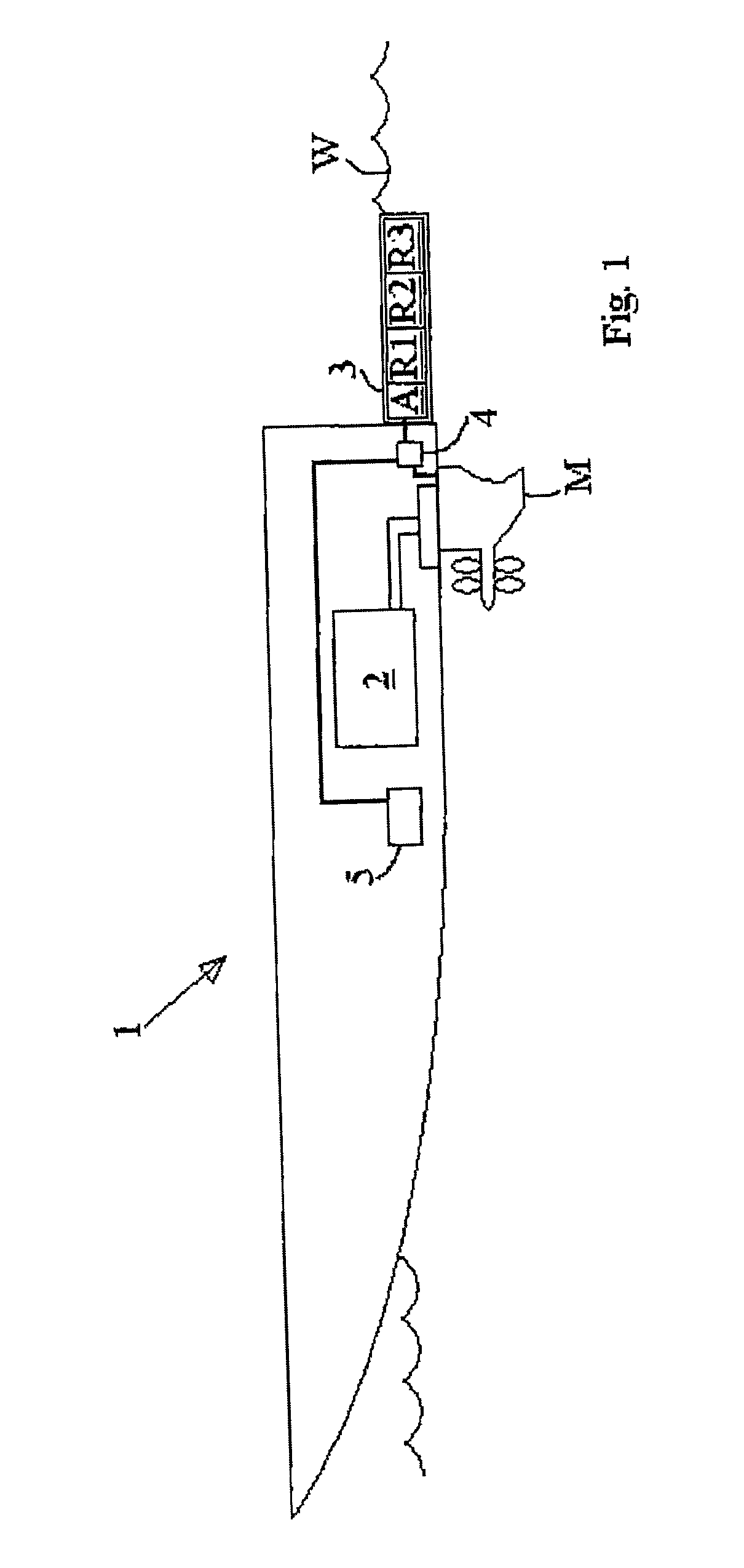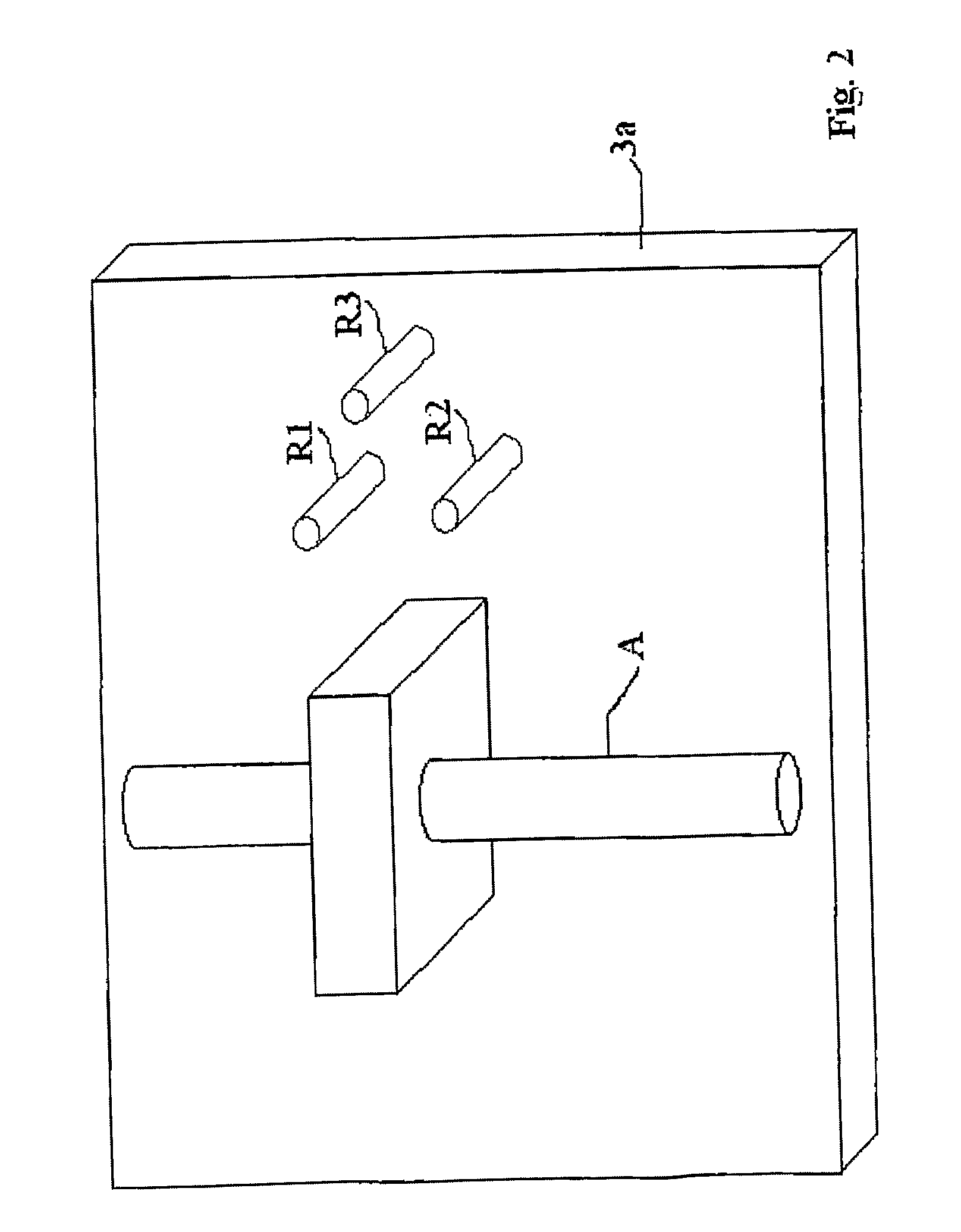Auxiliary device, a marine surface vessel, and a method for corrosion protection in a marine construction
a technology for marine construction and auxiliary devices, which is applied in the direction of insulated conductors, separation processes, instruments, etc., can solve the problems of damage, metal parts may corrode at an undesired rate, and the protection is too low, and achieve the effect of good results and relatively short regeneration tim
- Summary
- Abstract
- Description
- Claims
- Application Information
AI Technical Summary
Benefits of technology
Problems solved by technology
Method used
Image
Examples
Embodiment Construction
[0036]FIG. 1 shows a schematic cross-sectional side view of a boat 1 with a corrosion protection system in turn comprising an impressed current cathodic protection (ICCP) system. The boat 1 is provided with an engine 2 connected to a drive M, with propellers for the propulsion of the boat. In this example, the drive M, immerged in the water W, constitutes a metal part to be protected by the corrosion protection system. In FIG. 1, the drive M is schematically presented as a drive manufactured and marketed by Volvo Penta as an IPS (Inboard Performance System) drive, but the invention is of course applicable to boats with any kind of drive, for example a stern drive or a traditional propeller and rudder combination. Also, the invention is applicable to boats with any number of engines and drives.
[0037]Reference is also made to FIG. 2. The corrosion protection system comprises an external unit 3, mounted on a transom of the boat 1. FIG. 2 shows a back wall 3a of the external unit 3, mor...
PUM
| Property | Measurement | Unit |
|---|---|---|
| current density | aaaaa | aaaaa |
| electrical potential | aaaaa | aaaaa |
| time | aaaaa | aaaaa |
Abstract
Description
Claims
Application Information
 Login to View More
Login to View More - R&D
- Intellectual Property
- Life Sciences
- Materials
- Tech Scout
- Unparalleled Data Quality
- Higher Quality Content
- 60% Fewer Hallucinations
Browse by: Latest US Patents, China's latest patents, Technical Efficacy Thesaurus, Application Domain, Technology Topic, Popular Technical Reports.
© 2025 PatSnap. All rights reserved.Legal|Privacy policy|Modern Slavery Act Transparency Statement|Sitemap|About US| Contact US: help@patsnap.com



